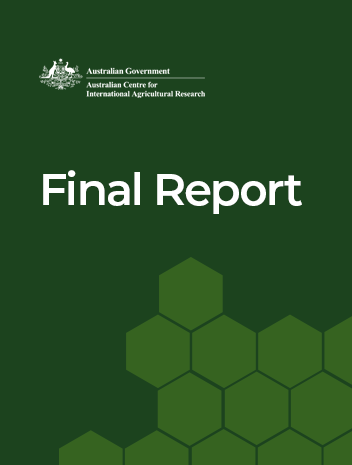Overview
This project aimed to identify the potential of various management practices to decrease the immediate and rapid soil carbon loss during land clearing and for management activities for farming immediately following clearing.
The team did a literature review and meta-analysis (analysis of findings across multiple published studies), along with a visit to Indonesia, to synthesise existing research on the amounts and types of greenhouse gas emissions that arise when peatlands are converted into agricultural land. Clearing of peat for agriculture is no longer permitted, and thus the measurement of emissions from that conversion process is no longer highly relevant to policy or management. Fortunately, the team used a research approach that allowed them to also understand the implications of land abandonment and management.
Once peat has been converted to agricultural land, it often degrades to the point of land abandonment. Abandoned agricultural lands emit more greenhouse gases than actively managed lands, in part because of increasing fire risks. Thus, supporting people to manage lands well enough to prevent abandonment would avoid greenhouse gas emissions as well as sustain livelihoods.
One of the biggest reasons why converted peat emits greenhouse gases is because water tables are lowered too far. Maintaining higher water tables as well as reducing nitrogen fertiliser inputs are the most significant ways to ensure that greenhouse gas emissions are minimised from agricultural lands that were once peatlands.
Finally, an important result is that different activities may raise or lower different types of greenhouse gases. For example, an activity could increase carbon dioxide emissions but still have a net effect of decreasing overall greenhouse gas emissions, and thus be more beneficial than suspected based on a simpler analysis. Therefore, understanding the contribution of land management to overall emissions requires a comprehensive evaluation approach.
Project outcomes
- Understanding and documenting the factors that affect the immediate rapid release of soil carbon loss from systems undergoing land use change from native vegetation to production agriculture in the Asia-Pacific region.
- Identifying potential management options that prevent or reduce this rapid initial loss of soil carbon.
- Providing ACIAR and the New Zealand Ministry for Primary Industries with recommendations to develop their climate change programs in the Asia-Pacific region, especially addressing emissions avoidance.
- Establishing and promoting collaboration between Australia, New Zealand and Indonesia on reducing the rapid immediate loss of soil carbon following land use change in the Asia-Pacific region – as a launchpad to establishing effective change should this scoping study confirm apparent opportunities.



